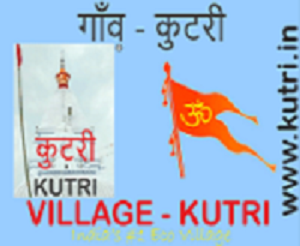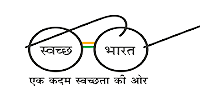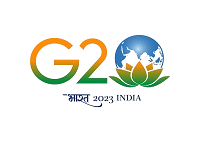Kutri Village, located in India, is known for its unique celebration of Dussehra, a major Hindu festival. The celebration here can be distinct compared to other regions, often featuring:
- Traditional Rituals: These include ceremonial processions, prayers, and offerings that align with the local customs and traditions of the village.
- Cultural Performances: The village might host folk dances, music performances, and drama that depict the epic Ramayana, which is central to Dussehra.
- Community Gatherings: Local residents come together for community meals and social events, reinforcing bonds and celebrating the festival’s spirit.
- Ritualistic Events: Specific rituals and customs unique to Kutri Village may be observed, which could include specific pujas (prayers) and ceremonies performed in a traditional manner.
- Festive Decorations: The village may be adorned with vibrant decorations, including lights, banners, and floral arrangements, creating a festive atmosphere.
The exact nature of the celebrations can vary year by year and may also be influenced by the village’s cultural and social dynamics.
What is Required Kutri Dussehra?
To organize a successful Dussehra celebration in Kutri Village, certain elements and preparations are typically required:
- Community Participation: Engaging local residents in the planning and execution of events ensures the celebration is inclusive and representative of village traditions.
- Ritual Items: Essential for traditional rituals, including idols of deities, flowers, incense, and other ceremonial items.
- Venue Setup: Preparing the venue for various activities, which might include decorating spaces, setting up stages for performances, and arranging seating for attendees.
- Cultural Programs: Organizing performances, such as folk dances, music, and theatrical plays, which are integral to the celebration.
- Food and Refreshments: Arranging for community meals or snacks to be shared among the attendees, often featuring traditional dishes.
- Logistics and Security: Ensuring adequate arrangements for crowd management, transportation, and safety measures to handle the influx of visitors and participants.
- Financial Resources: Budgeting for expenses related to decorations, rituals, cultural programs, and other aspects of the celebration.
- Communication and Coordination: Informing villagers about the schedule and activities, and coordinating with local authorities if necessary.
By addressing these requirements, Kutri Village can ensure a well-organized and enjoyable Dussehra celebration that honors its cultural and religious significance.
Who is Required Kutri Dussehra?
For a successful Dussehra celebration in Kutri Village, several key individuals and groups are typically involved:
- Village Elders and Leaders: They play a crucial role in planning and overseeing the festival, ensuring that traditions and customs are respected.
- Local Organizers: Individuals or committees responsible for coordinating the various aspects of the celebration, including logistics, scheduling, and communication.
- Religious Leaders/Priests: They perform the religious rituals, prayers, and ceremonies associated with Dussehra, guiding the community in spiritual practices.
- Cultural Performers: Local artists, musicians, and dancers who participate in cultural performances and entertain the attendees.
- Volunteers: Members of the community who assist with preparations, setup, and execution of the events.
- Support Staff: Individuals who help with logistics, such as arranging food, managing decorations, and ensuring the smooth operation of the festival.
- Local Authorities: They may be involved in providing support for security, transportation, and public services during the festival.
Involvement from these key participants ensures that the Dussehra celebration in Kutri Village is well-organized, culturally rich, and enjoyable for everyone involved.
When is Required Kutri Dussehra?
Dussehra, also known as Vijayadashami, is celebrated on the tenth day of the Hindu month of Ashvin (usually September or October). The exact date varies each year based on the lunar calendar.
In Kutri Village, like in other places, the timing of the Dussehra celebration would align with this date. Typically, preparations and activities leading up to the festival might start a few days in advance, culminating on the main day of Dussehra.
For the most accurate information on the specific dates and schedule of the Kutri Village Dussehra celebration, it’s best to check with local organizers or community announcements as the festival approaches.
Where is Required Kutri Dussehra?
The Dussehra celebration in Kutri Village takes place within the village itself, which is located in the [state or region, if known]. The festivities are usually centered around key locations in the village, such as:
- Village Square or Main Gathering Area: This is often the focal point for larger community events, including processions, performances, and public celebrations.
- Temples or Religious Sites: Rituals and ceremonies may be held at local temples or other religious sites dedicated to the deities worshipped during Dussehra.
- Community Halls or Open Spaces: These areas may be used for cultural programs, feasts, and other social gatherings related to the festival.
The exact locations can vary based on the village’s layout and traditions. For precise details, local announcements or community leaders would provide the most accurate information on where specific events and activities are taking place.
How is Required Kutri Dussehra?
The Dussehra celebration in Kutri Village typically involves a blend of traditional and local practices, reflecting the unique cultural and religious heritage of the village. Here’s an overview of how the festival is generally celebrated:
- Religious Rituals: The festival begins with special prayers, pujas (rituals), and offerings to deities, often performed by local priests. This might include the worship of Lord Rama, as well as other deities associated with Dussehra.
- Cultural Events: The village hosts various cultural activities such as folk dances, music performances, and dramatic reenactments of episodes from the Ramayana, especially the victory of Rama over Ravana.
- Processions: There may be processions through the village, featuring decorated floats, musical bands, and community members dressed in traditional attire. These processions often culminate in a central gathering place.
- Community Gatherings: The festival fosters community spirit with shared meals, social events, and collective celebrations. Traditional dishes and sweets might be prepared and enjoyed by the villagers.
- Decorations and Festivities: The village is adorned with vibrant decorations, including lights, banners, and floral arrangements, creating a festive atmosphere.
- Special Rituals: There might be specific local customs or rituals unique to Kutri Village, reflecting its cultural heritage and traditions.
Overall, the Dussehra celebration in Kutri Village is characterized by a strong sense of community, religious devotion, and cultural expression.
Case Study on Kutri Dussehra?
A case study on Kutri Village Dussehra would involve a detailed examination of how the festival is celebrated in the village, including its cultural, social, and economic impacts. Here’s a structured approach to creating such a case study:
1. Introduction
- Background: Provide a brief overview of Kutri Village, including its location, population, and cultural context.
- Objective: Explain the purpose of the case study, such as understanding the significance of Dussehra in the village and its effects on the community.
2. Historical and Cultural Context
- History of Dussehra: Outline the origins and significance of Dussehra in Hindu tradition and how it is celebrated nationally.
- Local Traditions: Describe any unique practices or customs related to Dussehra in Kutri Village, including historical influences and changes over time.
3. Celebration Details
- Pre-Festival Preparations: Detail the activities leading up to the festival, such as planning meetings, decoration efforts, and community involvement.
- Festival Activities: Describe the key events of the celebration, including:
- Religious Rituals: Types of ceremonies and their significance.
- Cultural Programs: Performances, dances, and dramatizations.
- Processions: Route, participants, and key features.
- Community Involvement: Roles of different groups and individuals.
4. Social and Economic Impact
- Community Impact: Analyze how Dussehra affects community cohesion, social interactions, and local identity.
- Economic Impact: Assess the economic aspects, including spending on decorations, food, and other festival-related activities. Consider how the festival influences local businesses and employment.
5. Challenges and Solutions
- Challenges: Identify any difficulties faced in organizing the festival, such as logistical issues, financial constraints, or community disagreements.
- Solutions: Discuss how these challenges have been addressed or mitigated.
6. Case Study Findings
- Successes: Highlight successful aspects of the celebration and their positive effects on the village.
- Areas for Improvement: Suggest any areas where improvements could be made for future celebrations.
7. Conclusion
- Summary: Recap the key findings of the case study.
- Future Prospects: Offer thoughts on the future of Dussehra celebrations in Kutri Village, including potential developments or changes.
8. Recommendations
- For Organizers: Provide practical recommendations for improving the celebration.
- For Researchers: Suggest areas for further research related to Dussehra in Kutri Village.
9. Appendices
- Photos and Maps: Include any relevant visual materials.
- Interview Transcripts: Provide transcripts of interviews with village residents or organizers, if applicable.
- Documents: Attach any official documents or reports related to the festival.
This structure will help create a comprehensive case study that provides valuable insights into the Dussehra celebration in Kutri Village.
White paper on Kutri Dussehra?
A white paper on Kutri Village Dussehra would present an in-depth analysis and discussion on the festival, aiming to inform and provide insights to stakeholders such as local authorities, community leaders, and researchers. Here’s a structured outline for a white paper:
1. Executive Summary
- Purpose: Briefly describe the objective of the white paper.
- Key Findings: Summarize the main points about the Kutri Village Dussehra celebration, including its significance, impact, and recommendations.
2. Introduction
- Overview of Dussehra: Explain the significance of Dussehra in Hindu culture and its general observance across different regions.
- Kutri Village Context: Provide background information on Kutri Village, including its location, demographics, and cultural context.
3. Festival Overview
- Historical Background: Outline the history of Dussehra in Kutri Village, including any unique traditions or historical developments.
- Current Practices: Describe how Dussehra is celebrated today, including key rituals, events, and cultural activities.
4. Detailed Analysis
- Cultural Significance: Discuss the cultural importance of Dussehra in the village and how it reinforces local traditions and identity.
- Social Impact: Analyze how the festival affects community cohesion, social interactions, and local pride.
- Economic Impact: Examine the economic implications of the festival, including spending, business activities, and any economic benefits or challenges.
- Environmental Considerations: Assess any environmental impacts of the festival, such as waste management or resource use.
5. Challenges and Opportunities
- Challenges: Identify the main challenges faced in organizing the festival, such as logistical issues, financial constraints, or community conflicts.
- Opportunities: Explore potential opportunities for enhancing the festival, such as improving sustainability practices or increasing community involvement.
6. Recommendations
- Organizational Improvements: Provide recommendations for better planning and execution of the festival.
- Community Engagement: Suggest ways to increase community participation and involvement.
- Economic Strategies: Offer strategies for maximizing the economic benefits of the festival while addressing any financial issues.
- Sustainability Measures: Recommend practices for reducing the environmental impact of the festival.
7. Conclusion
- Summary of Key Points: Recap the main findings and recommendations of the white paper.
- Future Outlook: Provide thoughts on the future of Dussehra celebrations in Kutri Village, including potential developments or changes.
8. Appendices
- Data and Statistics: Include any relevant data, charts, or graphs.
- Case Studies or Examples: Provide additional examples or case studies related to Dussehra celebrations in other regions if applicable.
- References: List all sources of information and research used in the white paper.
9. Contact Information
- Authors and Contributors: Provide information about the authors or contributors to the white paper.
- Contact Details: Include contact information for further inquiries or feedback.
This structure will help create a comprehensive and informative white paper that provides valuable insights into the Dussehra celebration in Kutri Village and offers actionable recommendations for improvement.
Industrial Application of Kutri Dussehra?
Exploring the industrial application of Kutri Village Dussehra involves examining how the celebration can be leveraged for economic, cultural, and community development. Here are some potential industrial applications:
1. Tourism and Hospitality
- Cultural Tourism: Develop tourism packages centered around the Dussehra festival, highlighting the unique aspects of Kutri Village’s celebration. This could include guided tours, cultural workshops, and traditional cuisine experiences.
- Local Accommodation: Encourage the establishment or enhancement of guesthouses, homestays, and lodges to accommodate visitors during the festival.
2. Handicrafts and Souvenirs
- Local Crafts: Promote local artisans and craftspeople who create traditional items used during the festival, such as decorations, attire, and ritualistic objects. This can help boost local craftsmanship and generate additional income.
- Souvenir Production: Create and market souvenirs related to the festival, including items that reflect the unique aspects of Kutri Village’s celebration.
3. Event Management and Services
- Event Planning: Develop a niche for event management services specializing in traditional and cultural festivals. This could include logistics, decorations, and event coordination.
- Catering and Food Services: Establish catering services that specialize in traditional festival foods, potentially expanding to serve other events and celebrations.
4. Marketing and Branding
- Regional Branding: Use the festival to enhance the brand of Kutri Village as a cultural destination. This could involve digital marketing, social media campaigns, and collaborations with travel agencies.
- Local Business Promotion: Encourage local businesses to sponsor or participate in festival-related activities, creating opportunities for mutual promotion and community engagement.
5. Infrastructure Development
- Festival Infrastructure: Invest in infrastructure improvements that support the festival, such as better roads, public facilities, and waste management systems. This can enhance the overall experience for visitors and residents.
- Sustainable Practices: Implement sustainable practices in festival management, such as eco-friendly decorations and waste reduction strategies, to set an example for other communities.
6. Community and Social Impact
- Job Creation: The festival can create temporary job opportunities in various sectors, including event management, hospitality, and local services.
- Skill Development: Offer training programs related to tourism, hospitality, and event management, leveraging the festival as a practical learning experience for local residents.
7. Educational and Research Opportunities
- Cultural Studies: Promote research and educational programs that focus on the cultural and social aspects of the Dussehra celebration, providing valuable insights into traditional practices.
- Case Studies: Develop case studies and reports on the industrial applications and impacts of the festival, which can be used for academic and professional purposes.
By focusing on these industrial applications, Kutri Village Dussehra can be leveraged to drive economic growth, cultural preservation, and community development while ensuring the festival’s sustainability and success.






